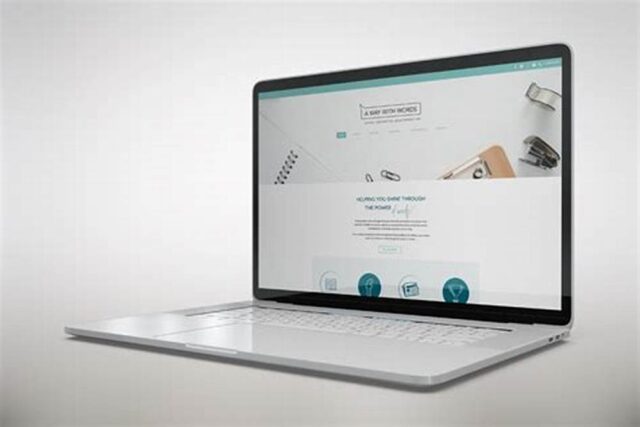A minimalist e-commerce website design can create a sleek, sophisticated shopping experience that is both functional and visually appealing. Minimalism in web design emphasizes simplicity, focusing on clean layouts, intuitive navigation, and purposeful content. This design approach can reduce clutter, improve user experience, and help visitors focus on the products. In this blog, we’ll explore the key principles of minimalist e-commerce design and provide tips on how to build one.

1. Prioritize Simplicity
The core of minimalist design is simplicity. The goal is to create a clutter-free interface that provides a seamless experience for users. A minimalist design eliminates distractions, allowing customers to focus on the essentials, such as product listings and checkout.
- Tip: Use plenty of white space, limit the number of colors, and reduce unnecessary elements like excessive animations, pop-ups, or ads.
2. Choose a Neutral Color Palette
Minimalist e-commerce websites typically feature a neutral color palette, which enhances the clean, airy feel of the design. White, black, gray, and muted tones are commonly used to create a calming and elegant aesthetic.
- Tip: Stick to a limited color palette and use contrasting colors for call-to-action (CTA) buttons or important elements to guide the user’s focus.
3. Focus on High-Quality Imagery
In a minimalist design, every element on the page should serve a purpose. High-quality images become more prominent in the absence of excessive design features, so they must be visually engaging and clear.
- Tip: Use professional, high-resolution product images that showcase your products from multiple angles. Consider using lifestyle images to give customers a sense of how the product is used in real-life settings.
4. Simplify Navigation
A minimalist e-commerce website requires intuitive navigation. Visitors should be able to move from one page to another without confusion or unnecessary clicks. Limiting the number of menu options and ensuring the site’s navigation is straightforward improves the user experience.
- Tip: Keep your navigation menu clean with only the most essential categories. Avoid overloading the header or sidebar with too many links. Use a sticky header for easy access to key pages, like the shopping cart or user account.
5. Use Clean Typography
Typography is an essential component of minimalist design. A simple, clean font makes the content easy to read and complements the overall design aesthetic. Avoid fancy fonts that can be difficult to read or appear too overwhelming in a minimalist layout.
- Tip: Use one or two fonts throughout the site. Opt for modern, sans-serif fonts that are easy to read on all screen sizes. Limit font sizes and styles to maintain consistency across the site.
6. Design for Mobile Responsiveness
A minimalist design translates well to mobile, as it relies on fewer elements and a clean layout. With mobile commerce on the rise, it’s essential to ensure your e-commerce site is fully responsive and provides an excellent user experience on smartphones and tablets.
- Tip: Test your website on various devices and screen sizes to ensure it looks and performs well. Prioritize touch-friendly buttons, simplified menus, and fast loading times for mobile users.
7. Use White Space Wisely
White space, or negative space, is a hallmark of minimalist design. It helps to declutter the website, improve readability, and allow the important elements, such as products and CTAs, to stand out.
- Tip: Don’t be afraid to leave ample white space around key elements. It creates a sense of balance and sophistication, guiding the user’s eye toward the most important content without overwhelming them.
8. Optimize for Speed
A minimalist website design naturally lends itself to faster load times since it reduces the number of design elements, animations, and large media files. Speed is critical in e-commerce, as slow websites can frustrate users and lead to lost sales.
- Tip: Compress images, limit the use of heavy JavaScript or CSS files, and enable browser caching. Utilize content delivery networks (CDNs) to ensure fast load times for users across different regions.
9. Keep the Checkout Process Simple
One of the key aspects of minimalist design is reducing friction, and this is especially important during the checkout process. The fewer steps and distractions, the better the conversion rates.
- Tip: Minimize the number of fields in your checkout form. Offer guest checkout options, and ensure that payment options are clearly visible and easy to use. Simplify error messages and provide users with clear instructions if they make a mistake during checkout.
10. Limit the Use of Text
In minimalist design, every piece of content must serve a clear purpose. Large blocks of text can overwhelm visitors and clutter the layout. Instead, use concise, actionable copy that guides users toward making a purchase.
- Tip: Use short, descriptive product titles and clear CTAs. Ensure that all text is essential to the user’s experience. Bullet points and icons can help communicate key product details without overwhelming the page.
11. Highlight Essential Call-to-Action (CTA) Buttons
In a minimalist design, CTAs become more important as they stand out against the clean backdrop. Ensure your CTA buttons, such as “Add to Cart” or “Buy Now,” are prominently displayed and guide users through the purchasing process.
- Tip: Use contrasting colors for CTA buttons to draw attention. Ensure that the buttons are large enough for easy clicking on both desktop and mobile. Avoid using too many CTAs on a single page, as this can dilute their effectiveness.
12. Ensure Consistency Across Pages
Consistency is key to maintaining the minimalist aesthetic across your e-commerce site. Each page should follow the same design principles, ensuring a cohesive experience for users as they browse from page to page.
- Tip: Use the same fonts, color schemes, and layout structures across all product pages, category pages, and the homepage. Consistent spacing and design help build trust and create a polished, professional feel.
Conclusion
A minimalist e-commerce website design enhances the shopping experience by prioritizing simplicity, usability, and elegance. By focusing on clean layouts, high-quality imagery, and intuitive navigation, you create a site that not only looks beautiful but also performs well. A minimalist approach helps customers focus on what matters most—your products—and ensures a seamless, enjoyable experience that drives conversions.


No responses yet